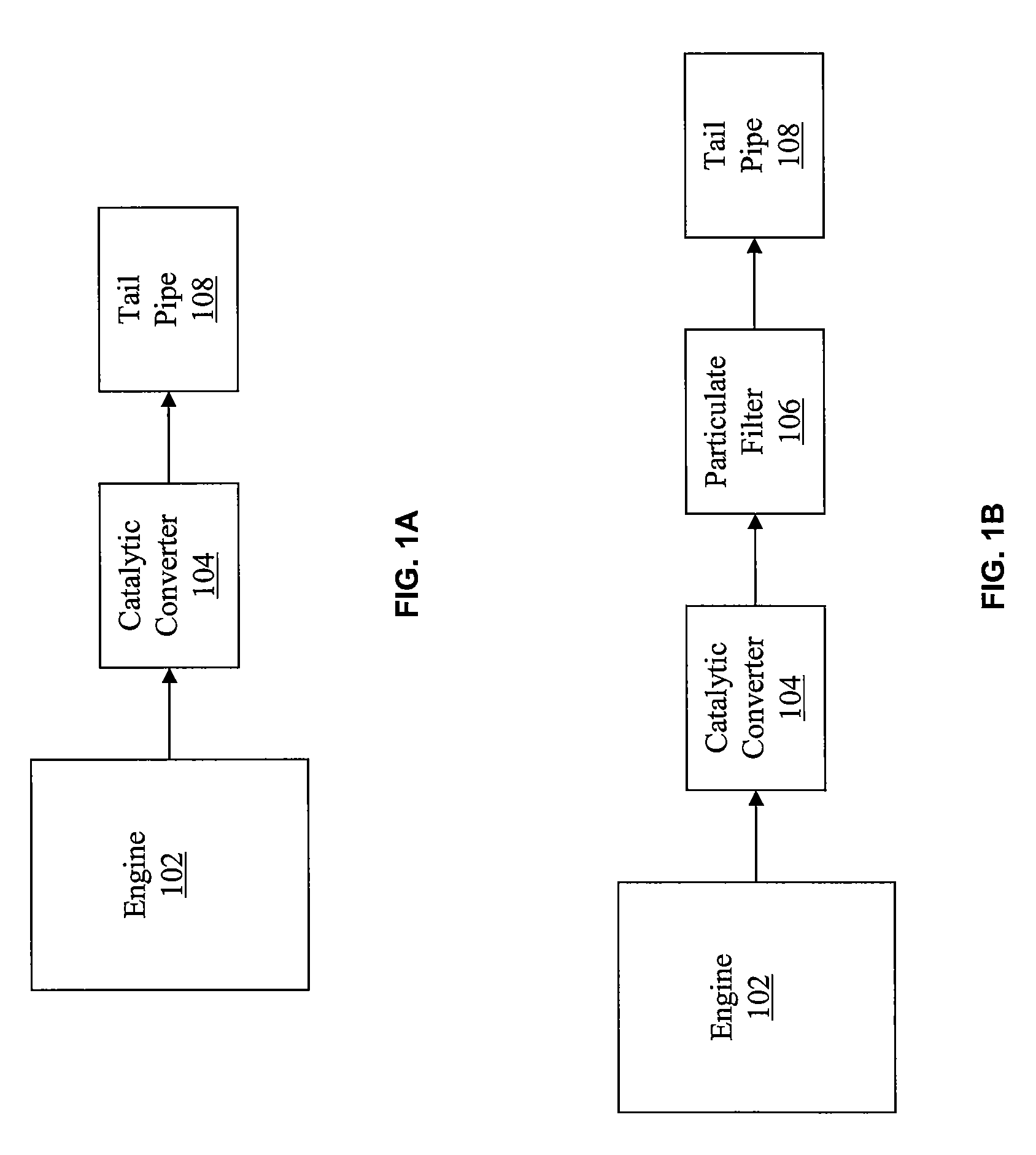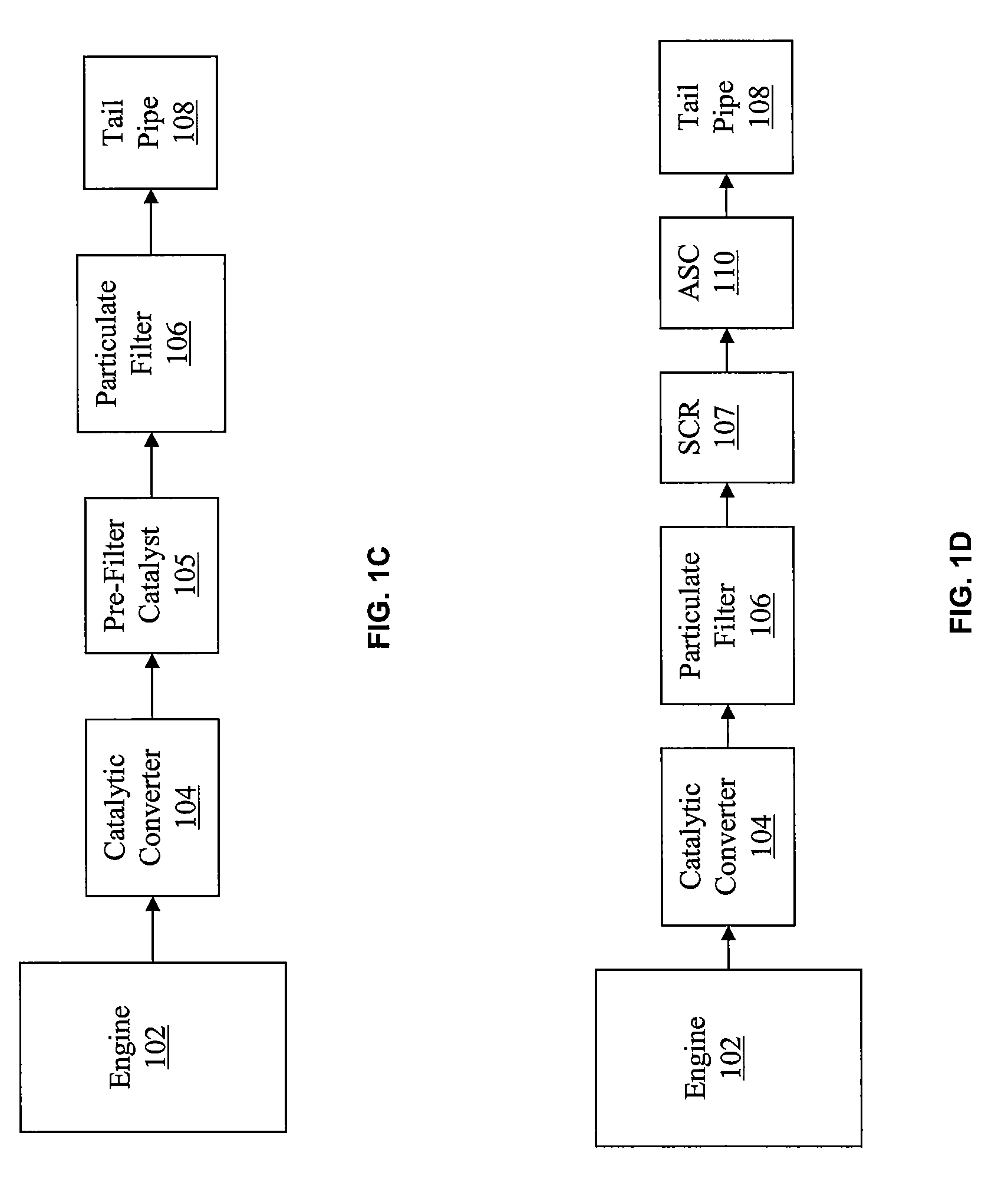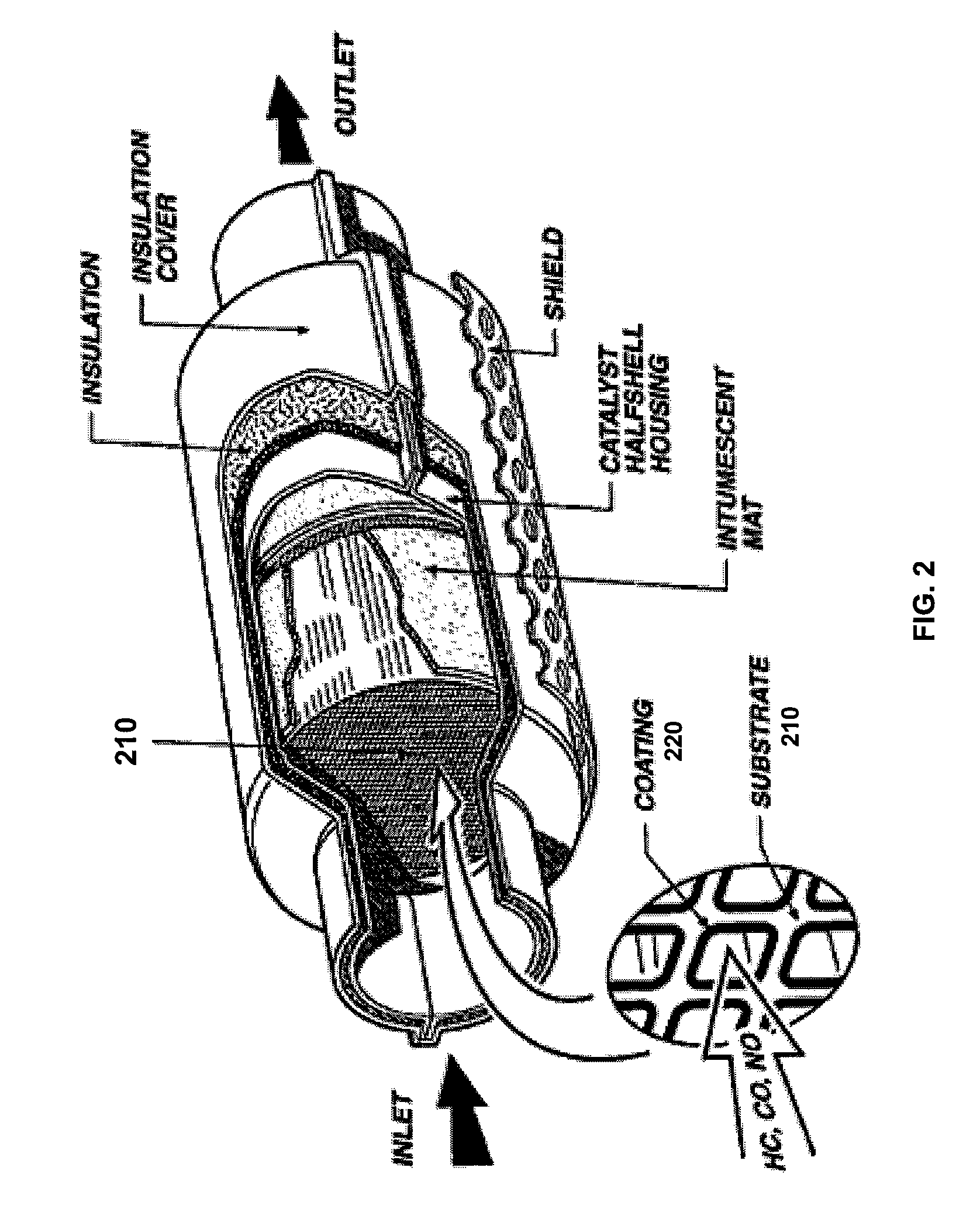Engine exhaust catalysts containing palladium-gold
a technology of engine exhaust and catalyst, which is applied in the direction of physical/chemical process catalyst, metal/metal-oxide/metal-hydroxide catalyst, etc., can solve the problems of not being supported by experimental data, based on mathematical models, and many industrial products such as fuels, cannot be manufactured without the use of catalysts, so as to boost the oxidation activity of palladium-gold catalyst, reduce the effect of hc inhibition and increase the effect of catalyst
- Summary
- Abstract
- Description
- Claims
- Application Information
AI Technical Summary
Benefits of technology
Problems solved by technology
Method used
Image
Examples
example 1
Tri-layer: PtPd (at 57.5 g / ft3) 1st Layer, Beta Zeolite 2nd Layer, PtPd (at 57.5 g / ft3) 3rd Layer
[0054]The supported PtPd catalyst powder (2.8% Pt, 1.4% Pd) prepared as described above was made into a washcoat slurry via addition to de-ionized water, milling to an appropriate particle size (typically with a d50 range from 3 to 7 μm), and pH adjustment to give an appropriate viscosity for washcoating. According to methods known in the art, the washcoat slurry was coated onto a round cordierite monolith (Corning, 400 cpsi, 5.66 inches×2.5 inches), dried at 120° C. and calcined at 500° C. to give the first layer of the multi-layer coated monolith, such that the PtPd loading was ˜57.5 g / ft3.
[0055]Then, beta zeolite was made into a washcoat slurry via addition to de-ionized water, milling to an appropriate particle size (typically with a d50 range from 3 to 7 μm), and pH adjustment to give an appropriate viscosity for washcoating. According to methods known in the art, the zeolite washco...
example 2
Tri-layer: PtPd (at 57.5 g / ft3) 1st Layer, Zeolite Mixture 2nd Layer, PtPd (at 57.5 g / ft3) 3rd Layer
[0058]The supported PtPd catalyst powder (2.8% Pt, 1.4% Pd) prepared as described above was made into a washcoat slurry via addition to de-ionized water, milling to an appropriate particle size (typically with a d50 range from 3 to 7 μm), and pH adjustment to give an appropriate viscosity for washcoating. According to methods known in the art, the washcoat slurry was coated onto a round cordierite monolith (Corning, 400 cpsi, 5.66 inches×2.5 inches), dried at 120° C. and calcined at 500° C. to give the first layer of the multi-layer coated monolith, such that the PtPd loading was ˜57.5 g / ft3.
[0059]Then, equal weight amounts of a beta zeolite and a ZSM-5 zeolite were combined and made into a washcoat slurry via addition to de-ionized water, milling to an appropriate particle size (typically with a d50 range from 3 to 7 μm), and pH adjustment to give an appropriate viscosity for washcoa...
example 3
PdAu (at 65 g / ft3) 1st Layer, Zeolite Mixture 2nd Layer, PtPd (at 65 g / ft3) 3rd Layer
[0062]The supported PdAu catalyst powder (1.7% Pd, 2.0% Au) prepared as described above was made into a washcoat slurry via addition to de-ionized water, milling to an appropriate particle size (typically with a d50 range from 3 to 7 μm), and pH adjustment to give an appropriate viscosity for washcoating. According to methods known in the art, the washcoat slurry was coated onto a round cordierite monolith (Corning, 400 cpsi, 5.66 inches×2.5 inches), dried at 120° C. and calcined at 500° C. to give the first layer of the multi-layer coated monolith, such that the PdAu loading was ˜65 g / ft3.
[0063]Then, equal weight amounts of a beta zeolite and a ZSM-5 zeolite were combined and made into a washcoat slurry via addition to de-ionized water, milling to an appropriate particle size (typically with a d50 range from 3 to 7 μm), and pH adjustment to give an appropriate viscosity for washcoating. According t...
PUM
| Property | Measurement | Unit |
|---|---|---|
| size | aaaaa | aaaaa |
| size | aaaaa | aaaaa |
| temperatures | aaaaa | aaaaa |
Abstract
Description
Claims
Application Information
 Login to View More
Login to View More - R&D
- Intellectual Property
- Life Sciences
- Materials
- Tech Scout
- Unparalleled Data Quality
- Higher Quality Content
- 60% Fewer Hallucinations
Browse by: Latest US Patents, China's latest patents, Technical Efficacy Thesaurus, Application Domain, Technology Topic, Popular Technical Reports.
© 2025 PatSnap. All rights reserved.Legal|Privacy policy|Modern Slavery Act Transparency Statement|Sitemap|About US| Contact US: help@patsnap.com



